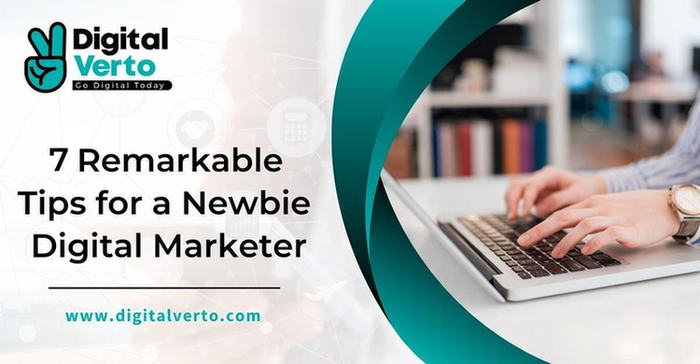In this blog, we’ll go over some of the best practices and tips to help you succeed in digital marketing. We’ll touch on a couple of misconceptions, outline some ways that digital marketing can benefit your business, and discuss how being an expert online can help you in your other offline marketing efforts.
This post is meant to help beginners who are looking to start or grow their digital marketing efforts. We’ll go over some of the best practices and tips that can help you succeed in online marketing while highlighting what companies should look out for.
Digital marketing is a constantly evolving field. It’s not enough to just know the basics anymore you need to stay on top of trends and changes in your industry.Digital Verto makes it easy to stay up-to-date on the latest digital marketing news. Here are some of our best tips for beginners:
1.Know Your Target Audience
One of the most important aspects of digital marketing is understanding your target audience. By researching and defining your target audience, you can create content and strategies that resonate with them. Tips for identifying your target audience include analyzing demographics, conducting surveys, and researching your competitors.
2.Developing a Strong Brand Identity
A brand identity is the personality of your business that distinguishes it from others. It’s the way your customers perceive your business. To create a strong brand identity, you need to define your brand voice, visual identity, and messaging. Your brand voice is the tone and personality of your brand. It’s how you communicate with your audience, and it should be consistent across all platforms. Your visual identity is your logo, color scheme, typography, and other design elements that make your brand recognizable. Your messaging is the way you communicate your value proposition to your customers. It should be clear, concise, and consistent.
3.Creating Quality Content
Quality content is the foundation of digital marketing. It helps to attract and retain customers by providing value to them. To create quality content, you need to understand your audience’s interests and pain points. Conducting keyword research can help you identify the keywords and topics that your audience is searching for. Formatting your content for readability is also important. Use short paragraphs, subheadings, and bullet points to break up your content and make it easier to read.
4.Utilizing Social Media
Social media is a powerful tool for reaching and engaging with your target audience. It allows you to create a community of followers who are interested in your brand. To utilize social media effectively, you need to choose the right platforms for your business. Facebook, Twitter, and Instagram are popular platforms for businesses. You need to create a social media strategy that aligns with your business goals. Engage with your followers by responding to comments and messages, and create shareable content that encourages your followers to spread the word about your brand.
5.Email Marketing
Email marketing is a powerful tool that can help you connect with your audience on a personal level. By segmenting your audience based on their interests and behavior, you can send targeted and relevant messages that resonate with them. When crafting your email campaigns, it’s important to create compelling subject lines that entice your audience to open your emails. Personalization is also key, as it can help increase engagement and click-through rates.
To get started with email marketing, you’ll need to build a subscriber list. You can do this by offering incentives such as exclusive content, discounts, or free trials in exchange for email addresses. Once you have a list, you can begin creating and sending emails that align with your business goals and objectives.
6.Search Engine Optimization (SEO)
Search engine optimization (SEO) is the process of optimizing your website to rank higher in search engine results pages. By improving your website’s visibility to potential customers, you can attract more organic traffic to your site. The first step in implementing SEO is conducting keyword research to identify the terms and phrases your target audience is using to find businesses like yours.
Once you have your keywords, you can optimize your website’s on-page content, including meta titles and descriptions, headings, and body copy. It’s also important to ensure your website is mobile-friendly, as mobile devices account for a significant portion of online traffic. Building high-quality backlinks from reputable websites can also help improve your website’s search engine rankings.
7.Monitor and Measure Results
Monitoring and measuring your digital marketing efforts is crucial to understanding what’s working and what’s not. You can use tools such as Google Analytics to track metrics such as website traffic, engagement rates, and conversion rates. By analyzing this data, you can make informed decisions about where to allocate your marketing resources and make necessary adjustments to improve your results.
Regularly reviewing your metrics and adjusting your strategies accordingly can help you continually improve your digital marketing efforts and achieve your business goals. Remember to set specific, measurable goals for each campaign and track your progress to ensure you’re on track to meet your objectives.
This post is meant to help beginners who are looking to start or grow their digital marketing efforts. We’ll go over some of the best practices and tips that can help you succeed in online marketing while highlighting what companies should look out for.

